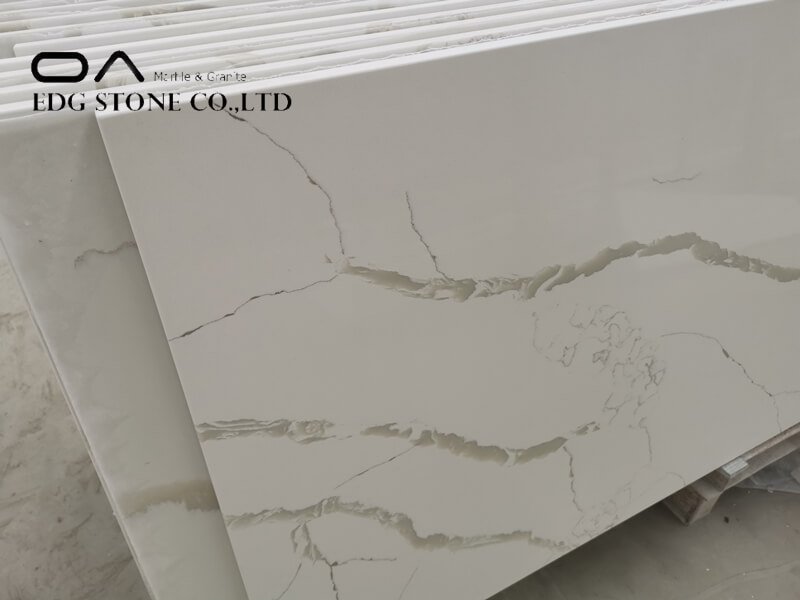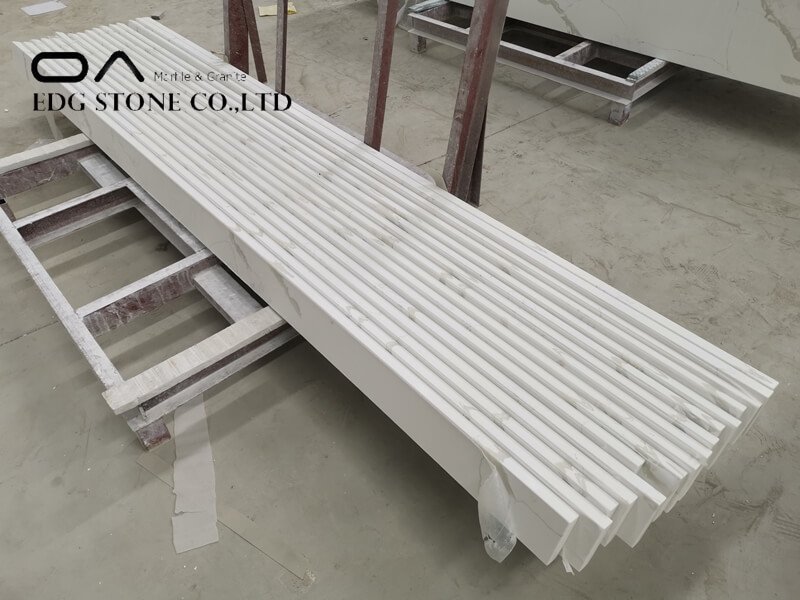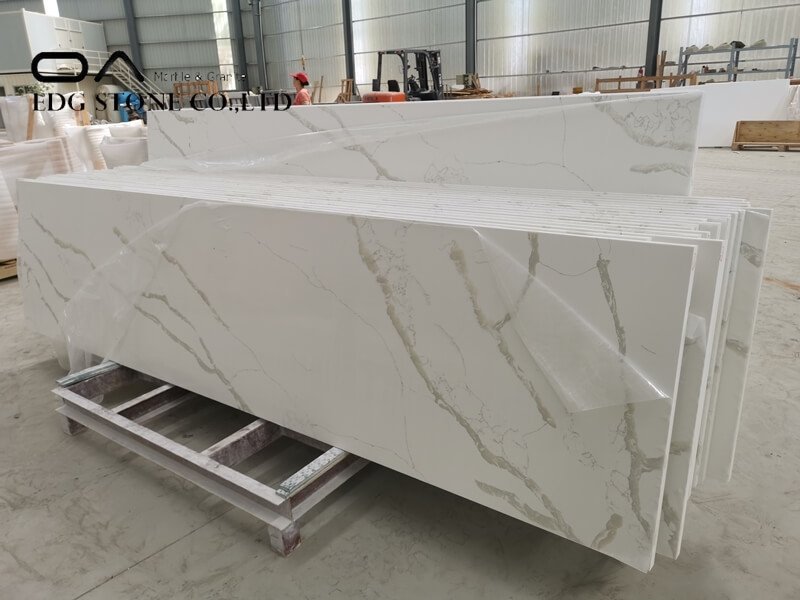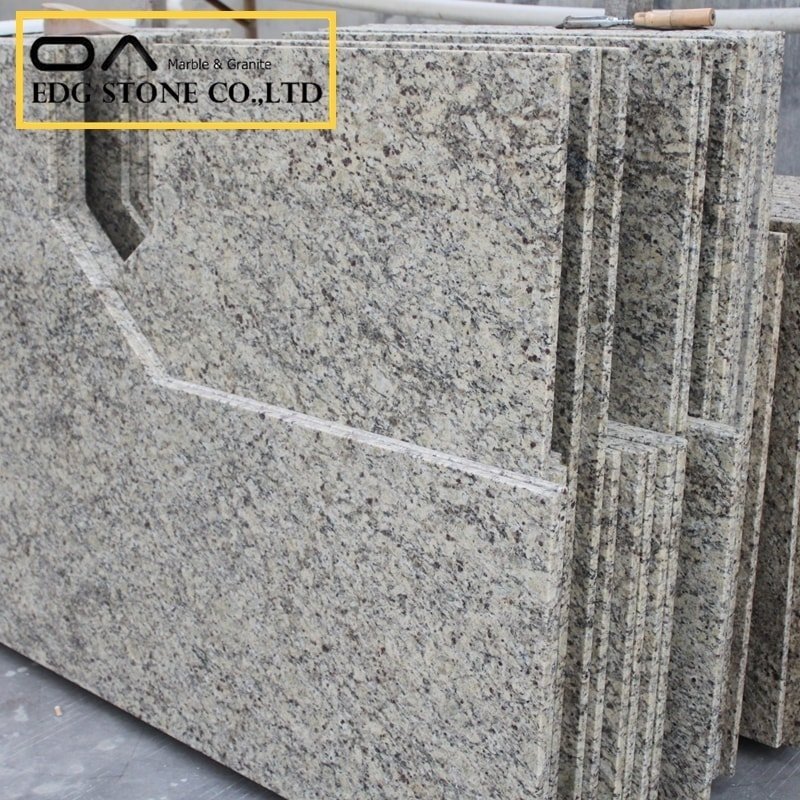1. The formation of rust spots The rust spots are mainly formed by the oxidation reaction of iron in the stone. Iron, water, and oxygen are the three major factors that contribute to the formation of rust spots. Generally, we divide rust spots into two categories according to their different levels of reaction:
(1) Deep rust spots. Many types of stone, especially granite, contain a certain proportion of iron components. When these iron components are in full contact with water and oxygen, they will cause oxidation reactions and generate rust spots. Stones that are particularly prone to such rust spots are American white hemp, Shandong white hemp (small flowers), rust stone slate, etc. In addition, the alkali in the cement reacts with the iron in the stone under the action of water, which can also form rust spots.
(2) Surface rust spots. In the process of mining, processing, transportation, and installation of stone, a small number of iron residues are left after the surface comes into contact with iron objects. These iron residues will oxidize with moisture and oxygen in the air to form rust spots.
2. Treatment of rust spots The treatment method of rust spots is mainly to use rust remover. When carrying out rust removal treatment, the following points should be paid attention to:
(1) Try to avoid using oxalic acid to directly clean stone rust spots, because oxalic acid simply oxidizes and reduces the rust spots (Fe2+), and the oxidized and reduced iron ions are still unstable, and it is easy to oxidize again with water and oxygen in the air. The rust is regenerated, and the area of rust spots will be further enlarged with the flow of the oxalic acid aqueous solution. This is why when oxalic acid is used to remove rust, the more rust spots will be removed, and the larger the removal.
(2) When choosing rust remover, be sure to choose good quality products. Because a good rust remover is not only an acid component but also an appropriate amount of additives to maintain the stability of iron ions in the oxidation-reduction reaction. The rust spots treated with this rust remover can be kept for a long time without recurrence even if they are not protected. On the contrary, some rust removers are just simple mixtures of some acids, which cannot maintain the stability of iron ions in the oxidation-reduction reaction, and the recurrence rate is high.
(3) Because the composition of marble and granite is different, their properties are different. Marble The main component of marble is calcium carbonate, which is alkaline; the main component of granite is silica, which is acidic. Therefore, when using rust remover, we must distinguish between marble rust remover and granite rust remover. Granite rust remover must not be used for the treatment of rust spots on marble.
(4) When dealing with surface rust spots, only need to brush on the surface with rust remover. Sometimes, the surface grinding and polishing method can also be used for treatment; the treatment of deep rust spots is relatively more complicated, and a certain dosage and reaction time needs to be maintained. Sometimes it needs to be reused to achieve the desired effect.
(5) After the stone is constructed with rust remover, it is recommended to clean it again with clean water. After drying, be sure to use a high-quality stone curing agent for protection. The purpose is to completely remove the residue after the oxidation reaction and prevent the oxidation reaction from happening again.
Third, the prevention of rust spots is mainly based on the effective control of the three elements of its formation: water, oxygen, and iron. Combined with years of management experience, we summarize the main effective methods for rust spot prevention as follows:
1. Before the stone is constructed, it is necessary to use high-quality stone curing agents to protect the stone on six sides to block the contact of iron and water in the stone.
2. Try to avoid using high-alkaline cement to bond the stone to reduce the chance of the alkali in the cement reacts with the iron in the stone.
3. Minimize the amount of water used during construction.
4. Avoid direct contact between ironware (quality) and acid-alkaline substances and stone.
5. For stone species with rich iron content, the dry hanging method is recommended for construction, and the wet construction method is avoided as much as possible.









